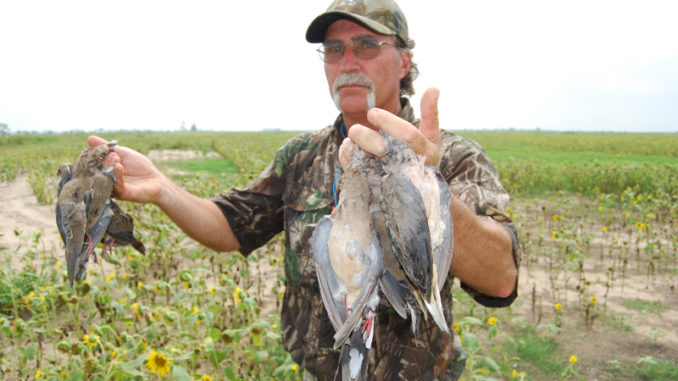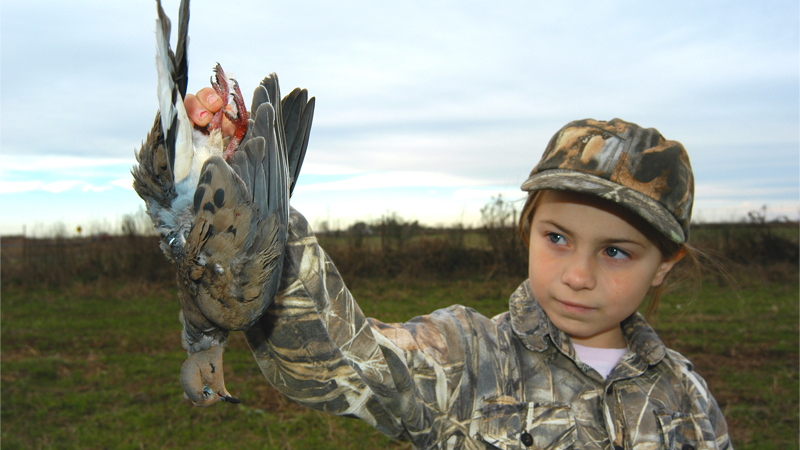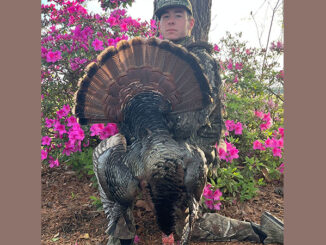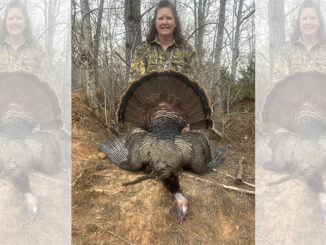
Follow these tips to reach a quick limit
Thousands of sportsmen in both Carolinas will be taking to the fields in hopes of bringing home a 15-bird bag limit during the opening day of dove season.
And doubtless, a lot of those hunters will have been invited by friends or family members to hunt a field they’ve never seen. They don’t know how and where the birds will fly. And the choice of where to set down their dove stool may determine how good their shooting will be.
So going in blind, what’s a dove hunter to do?
Hayward Swift runs an active dove club as part of his 400-acre Fork Plantation operation in Townville, S.C. He’s got to know where to send hunters on the three big fields of sunflowers, millet and sorghum to get everybody good shooting.
He looks for three specific physical features in and around fields that he believes doves will favor as they fly to and from feeding areas. He looks for dead trees on the perimeter of fields, gaps in tree lines on the perimeter of fields, and crowns or crests — high spots — in the middle of fields.
Set your dove stool up at one of these locations
“There’s nothing like finding a dead tree on the perimeter of a field,” said Swift (864-934-5275). “It can be an oak or whatever, but it’s a dove haven.
“I like to find a gap in the tree line. The doves will fly through that” going into and out of a field, he said. “And if you’ve got a crown or a crest in a field, I’d hunt there, because doves like to go to high ground.

“On our club, we hunt the low spots, because we don’t want anybody to be peppered with shot. But the crown of a field can be great,” he said.
If possible, Swift said hunters should spend an hour or two one afternoon before the season opens. They should look over the field to see what patterns doves fly when using the field. On some fields, dove flights will be high or low at different times of day. And where they come from will also change, depending on whether you’re taking birds coming off the roost in the morning going to feed or headed to feed after dusting or going to water.
“Try to go with an open mind, and pay attention to the weather,” Swift said. “Take note of the direction the wind is blowing to see how they’re flying.”
Decoys can be deadly on doves
In South Carolina, Labor Day weekend hunts can’t begin until noon. In North Carolina, hunters can start banging away at doves 30 minutes before sunrise. Sunset ends hunting in both states.
Swift’s hunters draw for their stands at Fork Plantation (www.forkplantation.com). He said novice hunters might gain some good information by talking with others who have hunted fields previously to get an idea where to set up. And he said hanging back and watching the first two or three hunters head to their spots can provide plenty of information.
Setting out dove decoys, especially spinning-wing decoys like Mojos, can attract more doves to almost any stand in a field.
“A Mojo really works for us,” he said. “We’ll put one up on a piece of conduit, maybe 6 to 8 feet off the ground. We might have a few (decoys) on the ground, around a bare spot. So it looks like you’ve got birds on the ground and one flying in to join them.
“I’m a sucker for using Mojos. I think the birds can see them from a long way up.”
Click here for more dove hunting tips.




